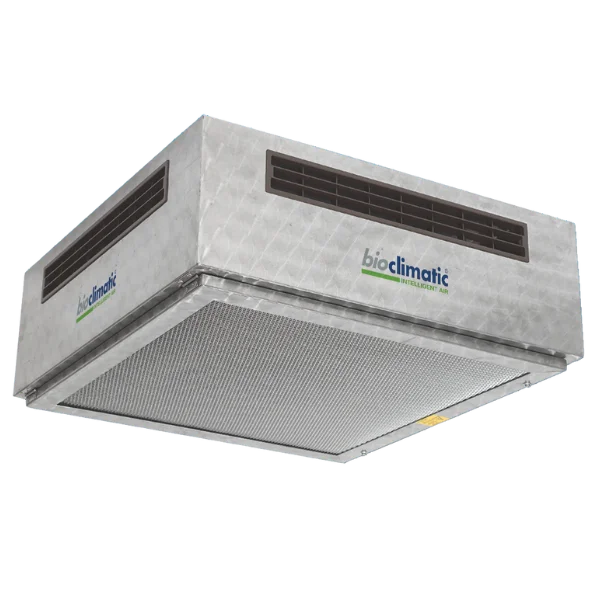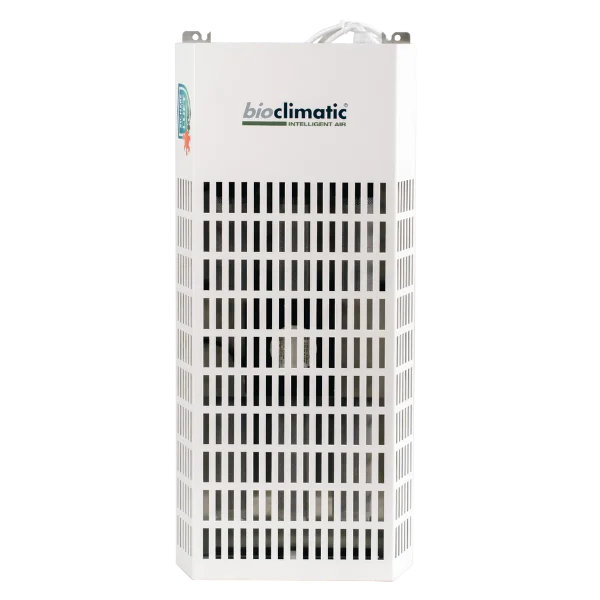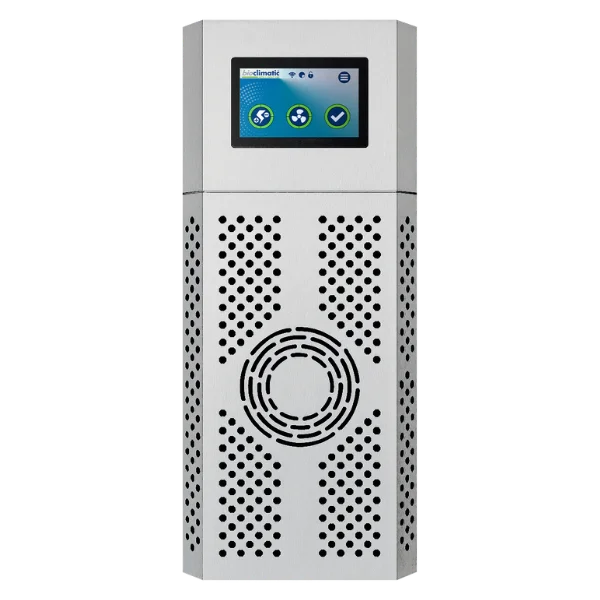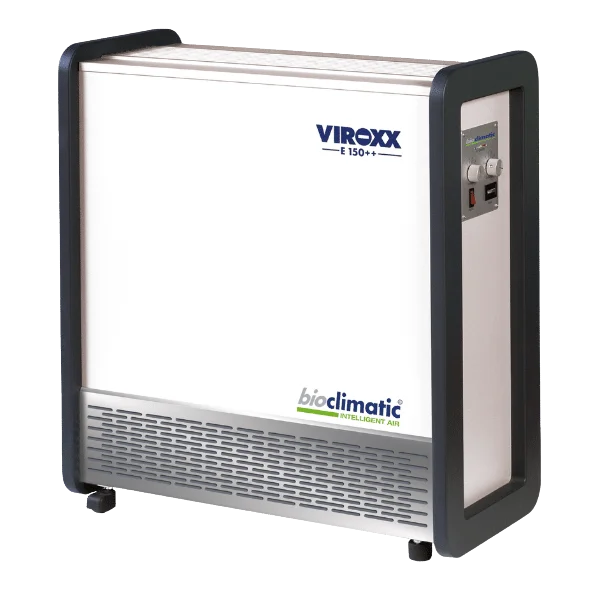To protect employees – air purifier laboratory
With bipolar ionization, we offer the possibility of purifying and sterilizing stale indoor air that is contaminated with odours and pollutants.
Our air purifiers for your laboratory
Inspired by nature, bipolar ionization purifies and sterilizes polluted laboratory air. It effectively removes pollutants, odors and microorganisms, improves air quality and ensures safe, hygienic working conditions in sensitive laboratory environments.
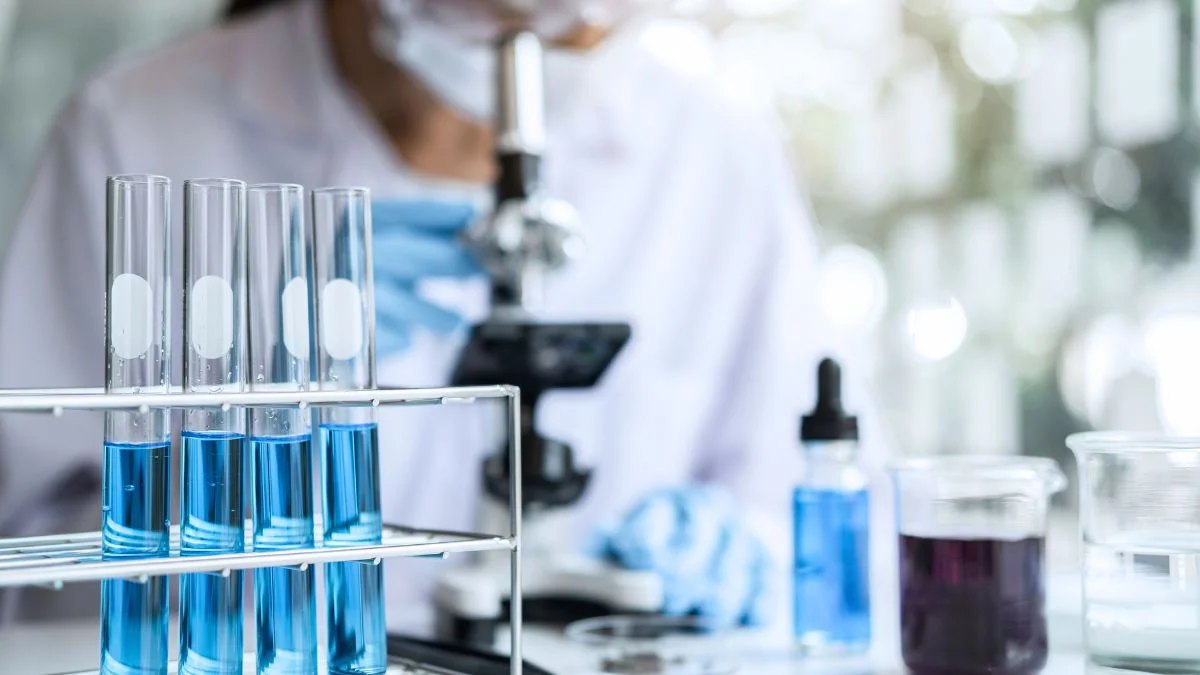
Advantages of our air purifiers
- Germ reduction – effective inactivation of viruses, bacteria and spores
- Odour neutralization – unpleasant odours are efficiently eliminated
- Health protection – Fewer sick days thanks to purified air
- Well-being – Ionized air increases comfort and quality of life
- Low maintenance – no filter change, minimal operating costs
- Continuous cleaning – Permanent air treatment for constant hygiene
- Simple mounting – quick installation without structural changes
- Low noise – Quiet operation for undisturbed work
- Energy-efficient – low consumption, economical operation
- Safety – Proven ionization technology for laboratory hygiene
Protect laboratories with air purifiers
Optimum air hygiene in laboratories is essential to avoid contamination, ensure reliable results and protect the health of employees. Pollutants, viruses and bacteria must not contaminate either the samples or the ambient air. Our innovative air purification devices with bipolar ionization reliably neutralize germs, particles and odours directly in the room air – without filter changes and with minimal maintenance.
AeroMat
AeroTec
AeroTec2
AeroTron
AirCleanerQ
Viroxx E150++
What our customers say








Interesting facts about our air purifiers for the laboratory
Requirements for air quality in laboratories
The requirements for air quality in laboratories are of crucial importance. After all, they significantly influence both the health of employees and the quality of scientific experiments and research results. In order to ensure optimum working conditions in cleanrooms and achieve reliable results, various aspects must be taken into account.
Whether it’s a food, forensic or dental laboratory – health aspects are paramount here. Laboratories are often associated with hazardous chemicals, toxic fumes or airborne particles that are potentially harmful to health. Controlled air quality is therefore essential. It minimizes the risk of exposure and protects the health of laboratory workers. In laboratories, it is particularly important for a sterile working environment that the following are removed from the air:
- Chemical hazards: Laboratories often use various chemicals that can be potentially toxic, corrosive or reactive. If these chemicals become airborne and are inhaled, they can cause health problems.
- Dust and particles: Laboratories can have a variety of airborne particles and dust that are created when performing experiments or processes. Some of these particles can be harmful to health, especially if they are inhaled.
- Microorganisms: Especially in biological and medical laboratories, microorganisms such as bacteria, viruses or fungi can pose a risk if they get into the air and spread. This can lead to infections or other health problems.
- Contamination by people: Employees in a laboratory can themselves be sources of contamination by bringing in viruses, bacteria or other pathogens. A lack of compliance with hygiene practices can affect air quality and increase the risk of cross-contamination.
- Poor ventilation: If a laboratory does not have adequate ventilation, the concentration of harmful substances in the air can increase. Poor ventilation can also cause humidity levels to rise, which encourages the growth of microorganisms.
Air purifiers as a solution
Air purifiers play a crucial role in this context, as they can efficiently remove pollutants in the form of very fine particles such as gases, pollen or fine dust from the room air. However, organic particles such as viruses, bacteria, aerosols, allergens and mold spores are also effectively reduced in the rooms to ensure a clean and healthy working environment in laboratories.
Because:
- … Air pollution has a considerable impact on the precision and reproducibility of the experiments.
- … contaminated room air can change the reactivity of chemicals, influence chemical reactions or even lead to misinterpretation of the results.
- … in certain laboratory areas, such as biotechnology or medical research, contamination can even disrupt the cultivation of cell cultures and impair the integrity of samples and contamination-sensitive surfaces.
The air quality therefore has a direct influence on the research results. Climatic conditions such as temperature, humidity and air exchange must be controlled in order to ensure reproducible results. Especially in highly sensitive areas such as hospitals or laboratories for microelectronics and nanotechnology, where a lot of work is done with disinfection, even the slightest contamination can cause serious errors.
In summary, excellent air quality in laboratories is essential for highly efficient work. The use of modern room air purifiers, equipped with innovative bipolar ionization technology, ensures the reliable inactivation of pollutants. This protects the health of employees, ensures the accuracy of experiments and contributes to reliable research results. Continuous monitoring of air quality is also crucial to making laboratories safe and productive working environments.
Selection criteria for air purifiers in laboratories
Choosing the right air purifier for laboratories requires careful consideration. Various criteria should be taken into account to ensure optimum performance and safety. First of all, the size of the rooms and the associated required volume flow are decisive. The air purifier must be able to cover all the laboratory equipment and ensure sufficient air circulation to effectively reduce contamination. A precise calculation of the room volume and the required air exchange rate is therefore essential.
Efficiency also plays a key role, as air purifiers are only as good as their technologies. In laboratories where hazardous chemicals or particles are used, high-performance air purifiers that work with bipolar ionization are recommended. This process allows air purifiers to neutralize certain particles or contaminants from the air. The choice of air purifier should therefore be made with care. Especially in environments where high air quality and protection against harmful particles are of great importance. Such environments are, for example, laboratories or other medical healthcare facilities. In addition, regular monitoring of the devices is crucial in order to maintain optimum cleaning performance.
Quiet working environment
The noise generated by the air purifier is another important factor. This is because loud devices could make laboratory staff uncomfortable or interfere with experiments. Quiet operation is therefore desirable, especially in environments where high concentrations are required. The energy efficiency of the air purifier is also important, as laboratories often operate continuously. An energy-efficient device can lower operating costs and reduce environmental impact at the same time.
Finally, it is important that the chosen air purifier can be adapted to the specific requirements of the laboratory. This can include flexibility in terms of placement, control options and possible integration with the existing ventilation system. Overall, the selection of an air purifier in laboratories should be carefully considered to optimize the protection of employees, the quality of research results and the efficiency of laboratory work.
Types of air purifiers for laboratories
There are various types of air purifiers that have been specially developed for use in laboratories to meet the different requirements there.
- Stand-alone air purifiers: These units are stand-alone devices that can be placed in a specific area of the laboratory. They are flexible and easy to install, ideal for smaller laboratories or specific areas where targeted air purification is required.
- Centralized air purification systems: Centralized air purification systems can be used for larger laboratories or buildings. They clean the air in an entire room or facility through air circulation and filtration.
- Mobile air purifiers: These portable and compact units offer flexibility and mobility. They can be used in different laboratory areas, depending on requirements and contamination situations.
- Specialized air purifiers: Some laboratories require special air purifiers that are designed to remove specific contaminants. There are specialized air purifiers for chemical vapors, biological particles or radioactive contaminants. These devices are designed to specifically eliminate certain hazards and offer a high level of safety.
The selection of the appropriate air purifier depends on the individual requirements of the laboratory and the specific sources of contamination that need to be reduced or removed. It is important to choose the right type of air purifier to ensure the best possible air quality and protection of laboratory staff.
Which Bioclimatic devices are suitable for laboratories?
Bioclimatic offers a wide range of air purifiers that have been specially developed to remove harmful substances from the air. They are therefore particularly suitable for use in laboratories in order to meet the diverse requirements in terms of air quality and safety:
- AirCleanerQ: A powerful, highly efficient air purifier for laboratories of all sizes that eliminates germs, bacteria, odours and mould through ionization.
- AeroTron: An air purifier module that can be integrated into an existing ventilation system to provide purified air throughout the laboratory area.
- AeroTec: A mobile air purifier that can be easily moved from one area to another and enables rapid removal of contamination from indoor air.
- AirCleanerHome: A powerful centralized ventilation system that improves the air quality in a larger laboratory area and effectively removes pollutants.
- AeroMat: A versatile air purifier that is suitable for laboratories with different sources of contamination and improves overall indoor air quality.
Installation and placement of air purifiers in laboratories
The installation and placement of air purifiers in laboratories is of crucial importance. This is because they can ensure efficient air purification and maximum protection. The following factors must be taken into account:
- Optimal positioning in the laboratory: The air purifiers should be strategically placed to ensure even air circulation and cleaning in all areas of the laboratory. Areas with a higher risk of contamination or particular hazards should be prioritized.
- Safety and work guidelines: When placing the air purifiers in laboratories, safety regulations and work guidelines of the laboratory must be taken into account in order to avoid possible disruptions or hazards. The devices should be positioned in such a way that they do not interfere with the workflow and do not represent a potential source of interference.
- Maintaining clearances: Sufficient distances from walls, furniture and other appliances are important to ensure unrestricted air flow and effectiveness of the air purifiers.
- Regular maintenance: Air purifiers in laboratories should be serviced and cleaned regularly to maintain optimum performance.
Careful installation, adjustment and placement of the air purifiers play a key role in ensuring that laboratories provide a clean and safe environment. This is particularly advisable in order to do justice to the research processes and provide a safe working environment for everyone involved.
